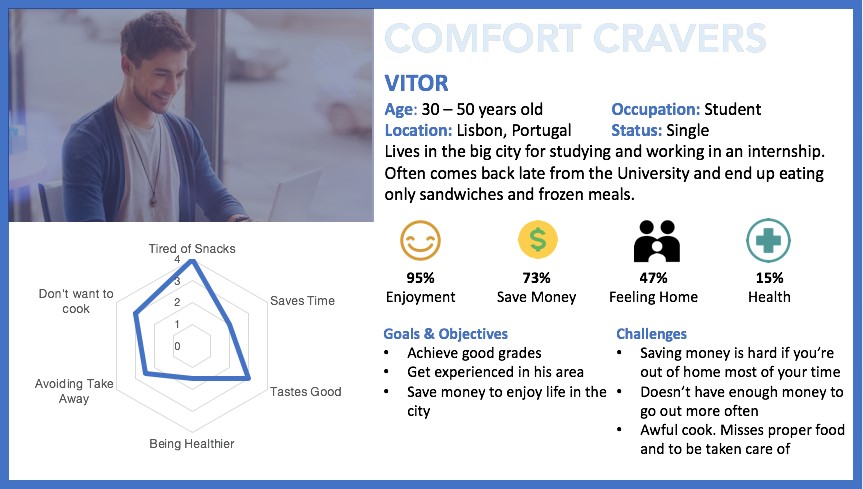Consumer Segmentation: Building Buyer Personas with Social Data


One of the toughest challenges that marketers face is understanding who their customers are, how they differ as individuals, and then deciding how to best market to each of them. With the transition from mass-marketing to target marketing, the need for more refined segmentation strategies has emerged and, as a result, buyer personas have gained traction as a powerful segmentation tool.
What are the challenges in creating a valuable buyer persona?
While there’s no one-size-fits-all recipe when it comes to buyer personas development, there are some common mistakes and incorrect conceptions that should be avoided.
Personas Should Be Believable Characters
One of the key problems that usually take place when developing personas is unrealistic characters, typically due to the lack of data during the persona conception process or an unclear connection between the data and the persona. This can happen either due to incomplete data (e.g. a disorganised CRM database) or the usage of third-party reports to build your own buyer-persona (usually relying on assumptions).
Personas Can Do More Than Just Marketing
Marketers are not the only ones who should be experimenting with buyer personas. Profiling customers can improve the efficiency of any employee involved in the company’s communication activities, from the sales team to customer support. If your buyers are also the users of your product, valuable insights for improving or growing your business can be unveiled – such as new features for your products or undiscovered segments in the market.
Personas Can Get Out of Date
Contrary to popular belief, this is not a one-off task. As your product and business strategies evolve, so do the challenges faced by your personas. That’s why it’s important for businesses to re-evaluate their personas from time to time to ensure that the audience still fits the company’s purposes.
Personas Are Not a Guessing Game
It might be tempting to make assumptions based on your existing knowledge or build profiles founded on team members’ ideas and conceptions. But to truly understand your buyers’ real needs, you need to do a deep-dive into what they have to say. A buyer persona should not be based on guesses, but rather on real data and conversation.
 An example of a summary profile of a buyer persona.
An example of a summary profile of a buyer persona.
How can social listening help unveil your buyer persona?
Traditionally, persona development relies mostly on interviews and ethnography, but, lately, big data and social data have become relevant methods for gathering consumer insights. Think of social listening as an adaptation of the classical ethnographic techniques in the online environment, allowing the exploitation of its flexibility in time and space. While classic ethnography faces the challenges of the digital age (i.e. where people stare at their phones for a great part of the day), social listening offers a comprehensive way to capture a completely organic record of the social interaction taking place online around a topic. This helps us to explore the data and unveil valuable characteristics for our personas, such as:
- Demographics – Getting to know the age, gender, occupation and family status of your consumers is part of the basics of segmentation and can be very useful. Just keep in mind that demographics won’t reveal the whole story and you will need to go beyond these to come up with a rich profile for your persona.
- Geographic – Behavioural patterns can be strongly associated with where your audience is located. Filtering the conversation by different countries or regions can help bring to the surface the nuances of the drivers and barriers perceived by local markets.
- Motivations & Barriers – Two of the most valuable insights for companies are the triggers and perceived barriers to purchasing a certain solution. Here, the data can reveal what consumers expect as results from that solution and even a deep-analysis of the importance of specific attributes through the decision-making process
- Buyer Journey – When it comes to decision-making, mapping the buyer journey can reveal further insights into the behaviour patterns through the different stages of the buying cycle, including other stakeholders.
- Benchmarking Competitors – Besides learning about the triggers and barriers associated with your product, social listening can expose how consumers perceive your competitors. This can help you to identify new opportunities or any threats in the market.
- Audience Psychographics – The combined usage of audience analysis tools helps us segment different groups of consumers based on their personality and characteristics, understanding topics of interest and opportunities for engagement.
Social listening also offers the advantage of a quick and scalable method for accessing up-to-date consumer insights. This will allow you to create a detailed buyer persona as the granularity of the data will open doors for innovation, maximise the efficiency of customer communication and inspire a more engaged communications team.
If you want help developing your company’s buyer persona through social listening, don’t hesitate to contact us, or Learn more about Convosphere's Audience Insights expertise and offering.
Want more like this?
Want more like this?
Insight delivered to your inbox
Keep up to date with our free email. Hand picked whitepapers and posts from our blog, as well as exclusive videos and webinar invitations keep our Users one step ahead.
By clicking 'SIGN UP', you agree to our Terms of Use and Privacy Policy


By clicking 'SIGN UP', you agree to our Terms of Use and Privacy Policy
Other content you may be interested in
Categories
Categories
Categories

Want more like this?


Want more like this?
Insight delivered to your inbox
Keep up to date with our free email. Hand picked whitepapers and posts from our blog, as well as exclusive videos and webinar invitations keep our Users one step ahead.
By clicking 'SIGN UP', you agree to our Terms of Use and Privacy Policy









